
- Subject:
- Arts and Humanities
- Material Type:
- Unit of Study
- Provider:
- Rice University
- Provider Set:
- OpenStax College

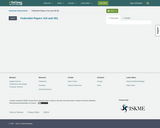
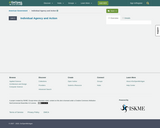
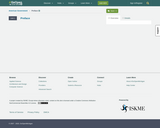
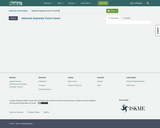
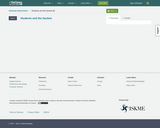
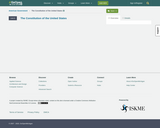
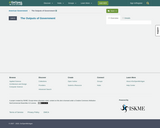
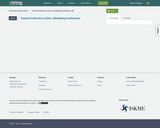
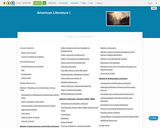
American Literature I (1650–1860) examines significant literary works of early American and Puritan literature, the Enlightenment, American Romanticism, and pre-Civil War era. The course includes primary texts (many accompanied by video/audio options), historical background, literary criticism and interpretation, and instruction on writing about literature.
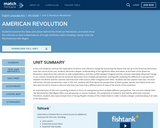
In this unit students continue the exploration of factors that influence change by examining the events that led up to the American Revolution. Over the course of the unit, students will build a deeper understanding of the significant ideas and values at the heart of the American Revolution, what drove the colonists to seek independence, and how conflict between England and the colonists ultimately influenced change in our country. Students will see the American Revolution from multiple perspectives, starting with analyzing the difference in perspectives between the British and the colonists and how each side’s actions often instigated each other. Students will also explore how class structure influenced colonists perspectives. Later in the unit, students will think about the perspectives of black people, women and Native Americans who were forced to choose a side and why they may have had a different point of view of the events of the revolution.
An important part of this unit is pushing students to focus on seeing history from multiple different perspectives. The core text Liberty! How the Revolutionary War Began offers one perspective on events, however, the prespective is limited to that held by white elite colonists. Therefore, students also read excerpts from A Young People's History of the United States in order to build a deeper understanding of all sides of the Revolution.

The stock market crash on October 29, 1929 -- known as Black Tuesday -- was the "worst economic collapse in the history of the modern industrial world." It spread from the United States to national economies across the globe. It ended a decade known for its high-spirited free-spending, called the Roaring 20s, and began almost 10 years of financial desperation that would touch nearly every citizen of the United States. The Great Depression caused bank closures and business failures and by its end, saw "more than 15 million Americans (one-quarter of the workforce)" unemployed. Herbert Hoover, president at the time, did not acknowledge the depth of the crisis and assumed that the American characteristics of individualism and self reliance would quickly bring the nation out of the disaster without a need for federal intervention. But, layoffs and financial desperation at the personal level were growing: "an empty pocket turned inside out was called a 'Hoover flag' [and] the decrepit shanty towns springing up around the country were called 'Hoovervilles'." Three years into the financial crisis, Franklin Delano Roosevelt, running on a platform of federal recovery programs called the "New Deal," easily took the presidential election of 1932.
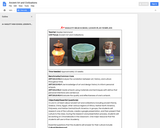
Students will learn about ancient art and civilizations including ancient Rome, Greece, China, Egypt, other various regions of Africa, Native North America, Polynesia, and Native Central/South America. In groups, the students will research one of the cultures, create a google presentation, and then present their culture to the class. During the research and presentation process, students will be working on Chromebooks in the classroom. One major resource that the students will use is Khan Academy. Students will also apply their knowledge of ancient art to create a clay project inspired by a civilization of their choice.
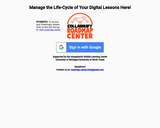
This particular roadmap features all of the COLLABORATIVE designed activities for the "Ancient Civilizations Roadmap Unit View (revised)" resource. You could distribute this roadmap to students for work that they complete synchronously with partner(s) as part of their learning path in the unit map.

This particular roadmap features all of the SOLO designed activities for the "Ancient Civilizations Roadmap Unit View (revised)" resource. You could distribute this roadmap to students for work that they complete independently, as part of their learning path in the unit map.
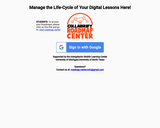
Compare and contrast writing for English Learners using social studies content. Scaffolds include multimedia support, partner work, jigsaw protocol and sentence frames. This roadmap presents the UNIT view (including solo and collaborative tasks). There are two additional roadmaps for distribution that would be helpful when teaching the unit - Ancient Civilizations Roadmap- Solo Activities + Ancient Civilizations Roadmap- Collaborative Activities.
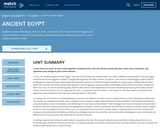
In this unit, students explore ancient Egypt. Over the course of the unit students learn and explore different characteristics of ancient Egypt and what the ancient Egyptians valued. Through learning about the daily routines, structures, and rituals of ancient Egypt, students will be challenged to draw conclusions about what the civilization valued and how those values compare to society today. Students will also learn about the role that mummies and pyramids played in ancient Egyptian society and why archeologists and scientists have been intrigued by them ever since. In second and third grade, students will continue their exploration of ancient civilizations by learning more about ancient Greece and ancient Rome. It is our hope that this unit, in conjunction with the others in the sequence, will help students understand and appreciate early civilizations that have had a lasting impact on the world.
In reading, this unit focuses on understanding the reasons and evidence an author uses to support points in a text. Being able to determine the reasons and evidence an author uses to support a point requires a deep understanding of cause and effect, informational text features, using illustrations to learn new details, and identifying the main topic and key details. These strategies have been introduced and practiced in previous units and should be reinforced and highlighted as needed in order to synthesize and identify the reasons an author uses to support points in a text. An additional focus of this unit is on using details from two texts to build a deeper understanding of content. Students will compare and contrast the similarities and differences between texts at the end of the unit but should be challenged to notice similarities and differences as they encounter new texts over the course of the unit.
In writing, students will continue to write daily in response to the text. At this point students should be fluid in writing about the text in a structured way. Therefore, the focus of this unit is on pushing students to include the best and most accurate evidence and then to explain the evidence with inferences or critical thinking.
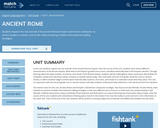
In this unit students explore the rise and fall of the ancient Roman Empire. Over the course of the unit, students learn about different characteristics of the Roman Empire, what lead to the Empire’s growth and success, and what eventually lead to the Empire’s demise. Through learning about the daily routines, structures, and rituals of the Roman Empire, students will be challenged to draw conclusions about what the civilization valued and how those values compare to societal values today. This unit builds onto the 2nd grade nonfiction unit on ancient Greece, in which students began to think about how the daily routines, structures, and rituals of a civilization show what they value. This unit, in conjunction with the second grade unit on ancient Greece, will help students understand early influences in the world and the first republics.
The mentor texts for this unit, Ancient Rome and Pompeii: A Nonfiction Companion to Magic Tree House and Eye Wonder: Ancient Rome, allow students to practice multiple informational reading strategies in two very different text structures. In both texts, but predominately in Eye Wonder, students will practice using a multitude of text features and illustrations as a way of learning new information about a topic. Over the course of this unit, students will constantly be thinking about how the information from one text builds on and connects to the information in the other text. Then at the end of the unit, students will be asked to critically analyze the similarities and differences between the two texts.
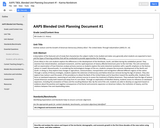
In this unit students explore the extension of democracy and Native American removal during the Age of Jackson. They also explore how Jackson used the power of the presidency to attack the Bank of the United States and its favoritism toward the wealthy elite. Students then focus on westward expansion, examining art and other primary sources to assess the treatment of Native Americans. They evaluate how the Age of Jackson moved American society both toward and away from its core ideals.
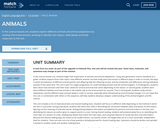
In this science-based unit, students begin their exploration of animals and animal adaptations. Using next generation science standards as a guide, students explore three main topics: how different animals use their body parts and senses in different ways in order to survive, the ways in which the behavior of different animal parents and offspring help the offspring survive, and the similarities and differences among individual animals of the same kind. This unit is part of a larger progression on understanding animals and the animal kingdom. In kindergarten, students learn about how animals meet their basic needs for survival and how that varies depending on the season. In second grade, students learn about different habitats and how animals in the habitat rely on the environment for survival. Then in third grade, students study animal adaptations and the different ways animals adapt in order to survive, especially when threatened by environmental changes. It is our hope that this unit, in combination with others in the sequence, will help students develop a deeper understanding of the animal kingdom and life science.
This unit includes a mix of read-aloud texts and shared-reading texts. Students will focus on different skills depending on the method in which the text is consumed. During read aloud, students will refine their skills in describing the connection between ideas and pieces of information, figuring out the meaning of unknown words, distinguishing between information provided by the pictures and information in the text, and identifying the reasons an author gives to support points in a text. During shared reading, students will predominately focus on identifying the main topic of a section of a text, retelling key details that match the main topic, and using text features to locate key facts and information. Because the shared reading days are meant to be student driven, not teacher driven, the target tasks are at a more accessible, independent level for students. There are also not a lot of key questions already planned for shared reading days. Questions should be written and spiraled in based on student needs and student reading levels.
In writing, this unit builds on the work students did in unit one. Students will continue to write daily in response to the text, with a focus on correctly answering questions and adding an inference or critical thinking.